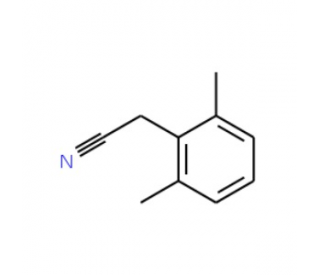詳細說明
Species Reactivity
Human
Specificity
Detects human Syndecan-2/CD362 in direct ELISAs. In direct ELISAs, no cross-reactivity with recombinant mouse Syndecan-1, recombinant human (rh) Syndecan-3, or rhSyndecan-4 is observed.
Source
Monoclonal Rat IgG2b Clone # 305515R
Immunogen
Mouse myeloma cell line NS0-derived recombinant human Syndecan-2/CD362
Glu19-Gly144
Accession # AAH49836Formulation
Supplied 0.2 mg/mL in a saline solution containing BSA and Sodium Azide.
Label
Alexa Fluor 700
Applications
Recommended
ConcentrationSample
Flow Cytometry
0.25-1 μg/10 6 cells
Human peripheral blood mononuclear cells (PBMCs)
Please Note: Optimal dilutions should be determined by each laboratory for each application. are available in the Technical Information section on our website.
Preparation and Storage
Stability & Storage
Store the unopened product at 2 - 8 °C. Do not use past expiration date.
Background: Syndecan-2/CD362
Syndecan-2, previously known as fibroglycan or heparan sulfate proteoglycan, is a member of the syndecan family of Type 1 transmembrane proteins capable of carrying heparan sulfate (HS) and chondroitin sulfate glycosaminoglycans. The four vertebrate syndecans show conserved cytoplasmic domains and divergent extracellular portions (except for GAG attachment sites). Among the Syndecans, Syndecan-2 is most similar to Syndecan-4 (1?3). Human Syndecan-2 is synthesized as a 201 amino acid (aa) core protein with an 18 aa signal sequence, a 126 aa extracellular domain (ECD), a 25 aa transmembrane region and a 32 aa cytoplasmic tail (4). The human ECD of Syndecan-2 contains three closely-spaced consensus Ser-Gly sequences for the attachment of HS side chains. It shares 76%, 73%, 87%, 78% and 63% aa identity with the ECD of mouse, rat, bovine, canine and chicken Syndecan-2, respectively. The cytoplasmic tail has both serine and tyrosine phosphorylation sites. Addition of 20?80 disaccharides per side chain adds considerably to the size of the 22 kDa core protein. Non-covalent homodimerization of Syndecan-2 is dependent on the transmembrane domain (5). Syndecan-2 is expressed in cells of mesenchymal origin, neuronal and epithelial cells, and is the predominant syndecan expressed during embryonic development. Expression is upregulated in several cancer cell lines (6). After induction in macrophages by inflammatory mediators, Syndecan-2 selectively binds FGFbasic, VEGF and EGF (7). Syndecan-2 expressed on human primary osteoblasts binds GM-CSF and may function as a co?receptor (8). Activated endothelial cell Syndecan-2 specifically binds IL-8 and may participate in promoting neutrophil extravasation by forming a chemotactic IL-8 gradient (9). Typically, cytokine, chemokine and extracellular matrix protein binding occurs through interaction with HS side chains, but the Syndecan-2 extracellular domain can bind TGF-beta directly via protein-protein interaction (10).
References:
Tkachenko, E. et al. (2005) Circ. Res. 96:488.
Oh, E.-S, and J. R. Couchman (2004) Mol. Cells 17:181.
Essner, J. J. et al. (2006) Int. J. Biochem. Cell Biol. 38:152.
Marynen, P. et al. (1989) J. Biol. Chem. 264:7017.
Choi, S. et al. (2005) J. Biol. Chem. 280:42573.
Park, H. et al. (2002) J. Biol. Chem. 277:29730.
Clasper, S. et al. (1999) J. Biol. Chem. 274:24113.
Modrowski, D. et al. (2000) J. Biol. Chem. 275:9178.
Halden, Y. et al. (2004) Biochem. J. 377:533.
Chen, L. et al. (2004) J. Biol. Chem. 279:15715.
Entrez Gene IDs:
6383 (Human); 15529 (Mouse)
Alternate Names:
CD362 antigen; CD362; Fibroglycan; heparan sulfate proteoglycan 1, cell surface-associated; Heparan sulfate proteoglycan core protein; HSPG; HSPG1; HSPG1syndecan proteoglycan 2; SDC2; SYND2; SYND2cell surface-associated heparan sulfate proteoglycan 1; syndecan 2; Syndecan2; Syndecan-2











 粵公網安備44196802000105號
粵公網安備44196802000105號